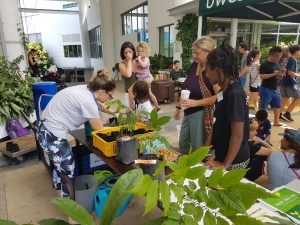LO 1 Identifying own strengths and develop areas for personal growth
Singing has always been one of my favourite hobbies. I have been singing since grade 6, in my previous school, Miras International School, where I joined the “Singing Club”. Singing allows me to express myself through the beautiful melodies of the songs, to which I try to add a little bit of my own uniqueness. Yet, I have never tried Opera singing and since this is a skill I wanted to gain, when I moved to Singapore my parents helped me to find for a teacher that specialized in this type of vocal performance. In the first lesson with Ms.Novicova, I realized that Opera singing would take quite a lot of time, however, since I enjoy the learning process and the result I was keen to begin this course.
I have been practicing singing over the course of several months now, gradually widening the scope of the songs I practice. One of the songs I really enjoy practising, is “O cessate di Piagarmi”, by Alessandro Scarlatti, an Italian Baroque composer. Being a song about unrequited love, it conveys the feelings of a loving man in a very dramatic way, expressing his sufferings. This mood that the lover carries is what I attempt to express through my singing, by adopting the right Opera vocal techniques.
At the start, it was quite difficult for me to adapt to the Opera-way of singing, since before, most of the songs I performed were either modern pop or 20th-century classics. I had to accustom to a number of techniques, such as stomach breathing, chin positioning and other voice-specific skills. My vocal teacher, Ms.Novicova really helped to improve my skills, by offering incredibly valuable advice on how to develop the right voice for singing Opera, such as Baroque. Every time, before I start practising singing the compositions, I begin with a “voice warm up”, which helps to properly set up my voice. Often these can be challenging, since every note has to be as “pure” as you are capable to make it sound. Yet, this “warm-up” is one of the crucial elements of my singing practice, since, without them, I wouldn’t be able to understand how to sing Opera compositions, lacking practice on more rudimentary melodies. Yet, step by step, I managed to slowly, but surely understand and feel how my voice had to sound, by practising and listening to other professional Opera singers, like Renato Bruson.
I have to admit, that sometimes, even though I knew I was making progress it felt that the way I sang was barely changing, however, I still managed to persevere and after a while, I could see the results more clearly. I learned that persevering, no matter what, was the key to seeing pleasant and satisfying outcomes. I also realized how important it is to move forward, progress, by taking even fifteen minutes a day to practice singing, because every one of those little steps contribute to the overall amount of practice and refine my existing skills.
Overall, for these first few months I truly relished the art of Opera singing, and I am grateful that I have this extra-curricular education opportunity. It is known that “the more skills you learn, the more interesting your life is.”








